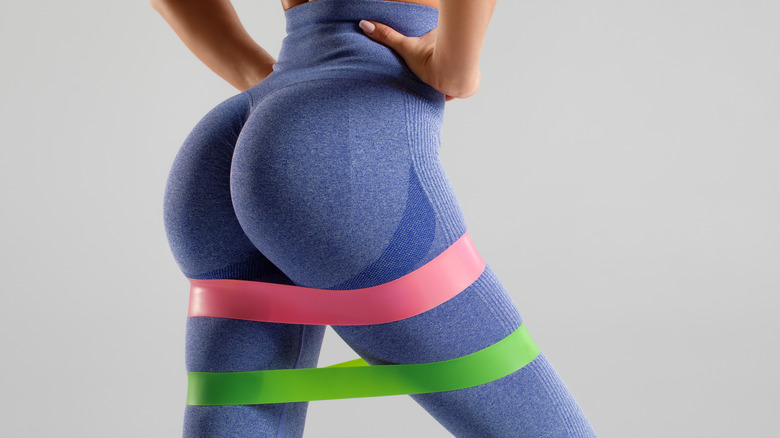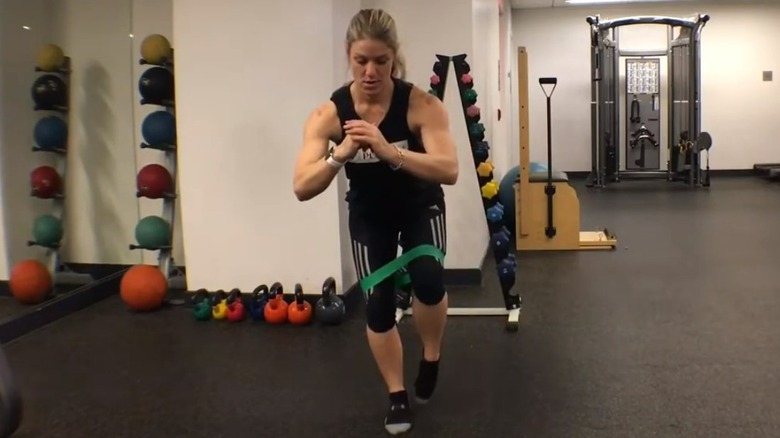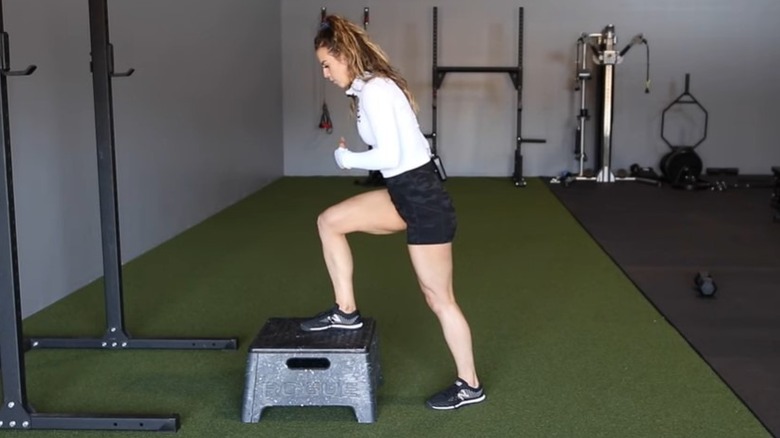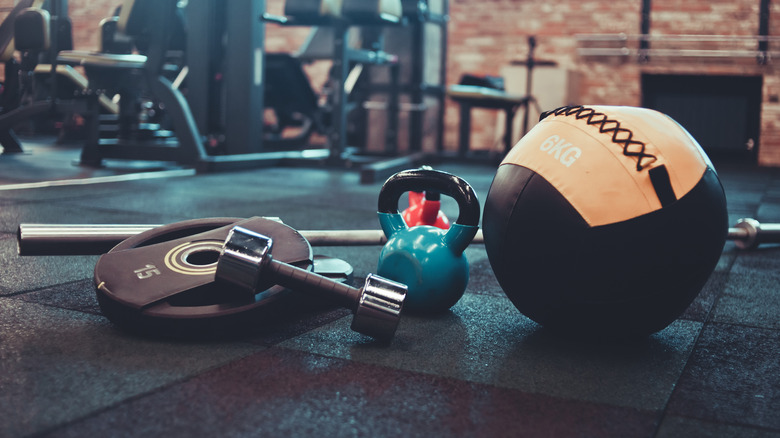Butt Workouts To Try If You Don't Want To Hurt Your Back
Back pain isn't fun for anyone, but it's a common outcome of performing certain gluteal (butt) and other exercises with improper form. According to the American Association of Neurological Surgeons, about "75-85% of Americans experience some form of back pain during their life." Cleveland Clinic claims that lower back pain is the most common.
Some of the popular exercises that work the gluteal muscles include glute bridges, squats, deadlifts, and lunges. While they can do wonders for your backside, these exercises can also cause or worsen lower back pain if you perform them incorrectly, as LIVESTRONG.com explains.
The good news is, there are several other options for butt workouts that won't hurt your back, and you can do them all from the comfort of your home. You'll just need a resistance band, a medicine ball (a kettlebell or dumbbell also works), and a step bench. Stairs can also be used in place of a bench.
Mini band glute taps
As the name implies, you'll need a resistance band (mini band) to perform this exercise. What's nice about this movement is that your back stays in the same place the entire time. Dr. Laura Miranda demonstrates the steps on the Girls Gone Strong YouTube channel.
Here's how to do it: Place the mini band over around your thighs, a couple inches above the knees. Spread your legs out a few inches to create tension in the band. Bend your knees a little and lean forward slightly. Lift your hands in front of you for balance. While still keeping tension in the band, slowly kick one leg back behind you and tap your toe on the ground.
You can activate different parts of the glutes by kicking your leg out in different directions. You can kick it directly behind you, out to the side, or diagonally behind you, toward the other leg. As you get stronger, you can use a tighter band to create more resistance to ensure the glutes are always activated and working hard.
Glute-focused step ups
Glute-focused step-ups are another exercise that activates the glutes without the risk of arching the back (via PowerliftingTechnique.com). To perform the exercise, you'll need a step bench or step stool. If you don't have one, you can use stairs or something else solid and sturdy that can support your weight. Just make sure it's at least 12 to 24 inches tall. Coach Sue discusses and demonstrates the move on Physique Development's YouTube channel.
To do a glute-focused step-up, place one leg on top of the bench. Then lean forward slightly and push off the heel that's on the bench. Focus on straightening the leg that's on the bench until the knee is slightly bent as the other leg lifts off the floor. Only one foot should touch the bench at a time. So if the left foot is planted on the bench, the right foot will only hover near the top of the bench, and vice versa. To step back down, push the hips back and keep the body leaning forward slightly. Then slowly drop the other foot back down to the floor.
Single-leg stance press
For this exercise, you can use a medicine ball, kettlebell, dumbbell, or anything else of comparable weight and size. According to Girls Gone Strong, the goal of this stabilization exercise is to "stay balanced on one leg while maintaining a level pelvis." Similar to the mini band glute taps, your back stays in the same place throughout the exercise.
Dr. Laura Miranda provides a tutorial of the move. First, hold the kettlebell or other weight in both hands and bend your knees slightly. Then raise one leg up in front of you until the foot is about 12 inches off the ground. The top of your lifted thigh should be almost parallel to the ground.
Next, hold the medicine ball up to your chest and slowly straighten your arms in front of you, keeping the weight parallel to your chest the entire time. You should also be balancing on one leg the entire time, with the other leg lifted high. You can also lift the ball directly above your head or diagonally in front of you to activate more of your shoulder muscles.
The single-leg stance press, glute-focused step-up, and mini-band glute tap are just a few of the many exercises you can perform that won't hurt your back. Just be sure to engage the glutes throughout the moves to get the best results.



